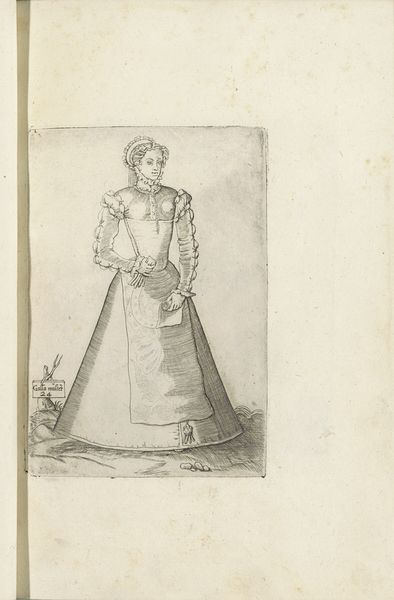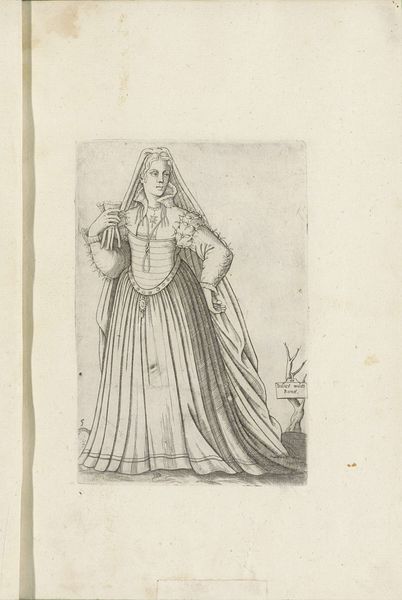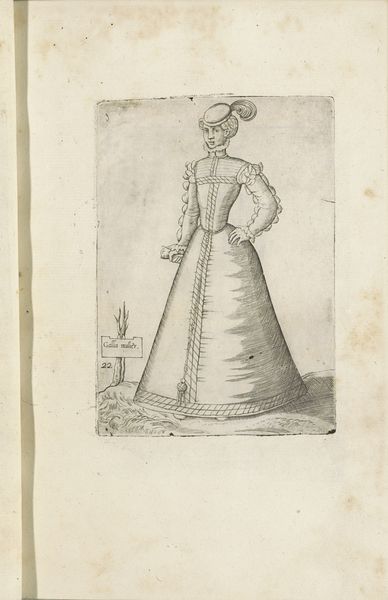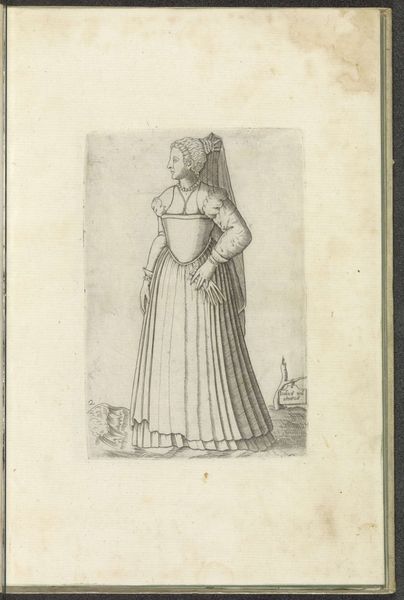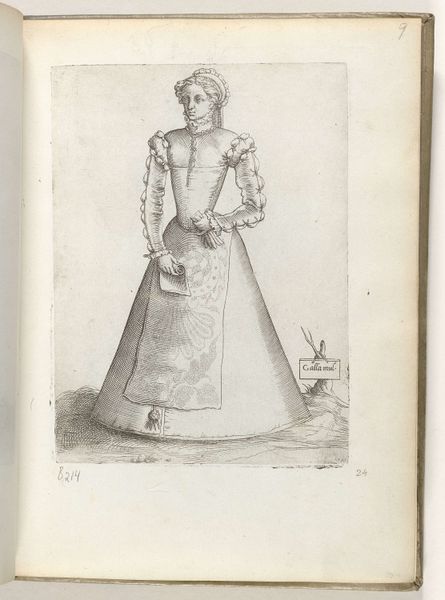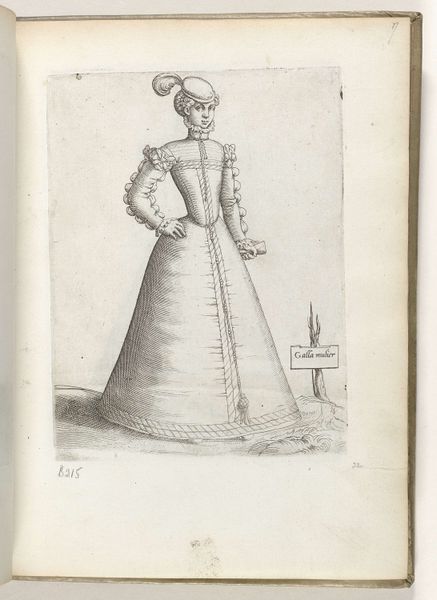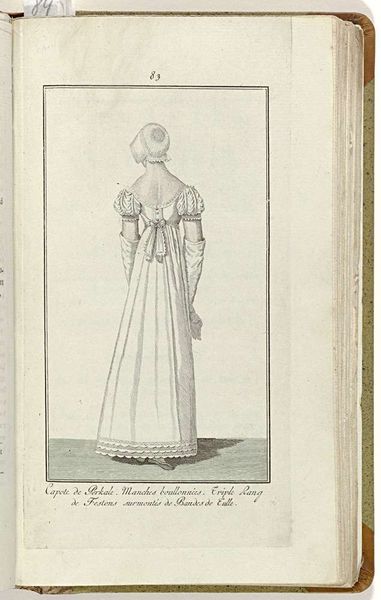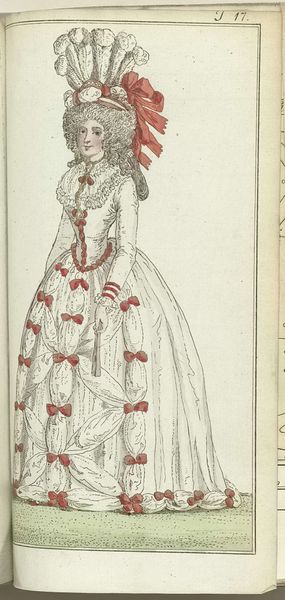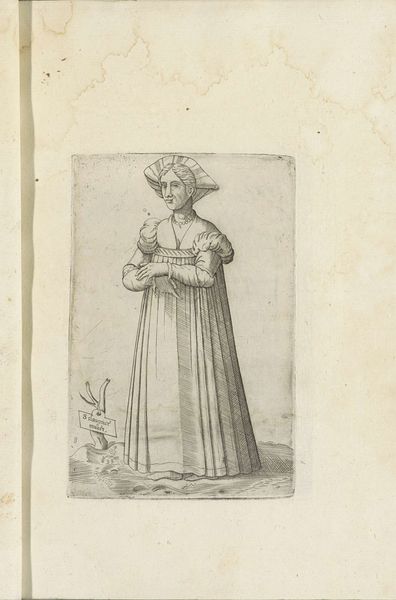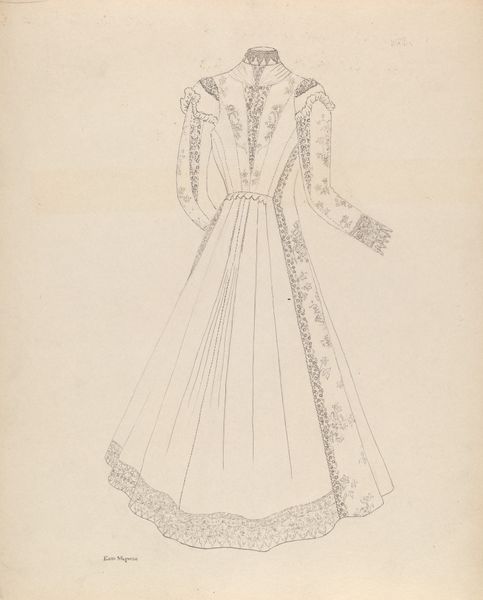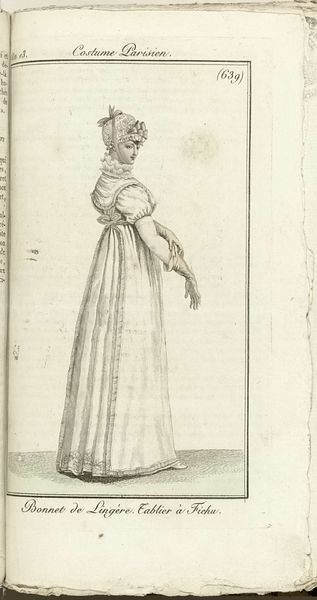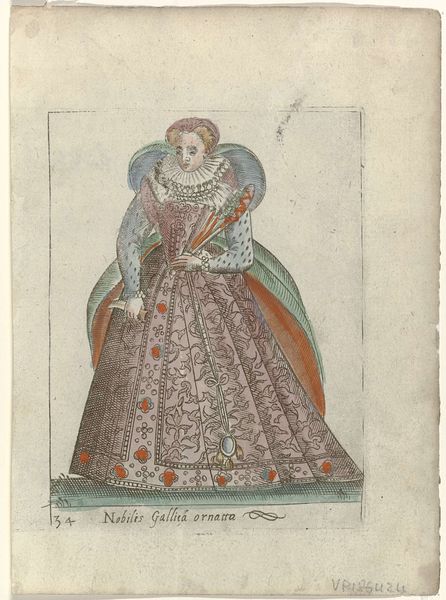
drawing, paper, ink
#
portrait
#
drawing
#
pencil sketch
#
mannerism
#
figuration
#
paper
#
ink
#
history-painting
Dimensions: height 265 mm, width 195 mm, height 150 mm, width 105 mm
Copyright: Rijks Museum: Open Domain
Curator: Allow me to introduce "Franse dame," a drawing crafted in 1569 by Ferando Bertelli. It resides here at the Rijksmuseum. This piece, executed in ink on paper, offers an intriguing look into the fashions of the time. Editor: My first impression is, oh, severity! She’s like a tower, this woman. Impenetrable. I bet her silhouette could cut glass. The lines are so crisp. Curator: Precisely. Bertelli's formal command, evident in the rendering of her dress, demonstrates a Mannerist preoccupation with idealized forms, where surface detail dominates. Editor: And yet, if you stare long enough, you catch this flicker of…vulnerability? In the eyes maybe. Or is it the fragile paper, betraying the centuries weighing down on her? It reminds me of old photographs, those sepia ghosts trying to remind you what once was. Curator: Indeed. The historical context is vital. The subject, while seemingly aloof, exists within the turbulent late Renaissance, reflecting prevailing concepts of decorum and status. Consider how her garment articulates this—each carefully delineated fold broadcasts a potent semiotic charge. Editor: Status yes, and what a dress it is! That huge skirt, those mad sleeves…it’s a whole architectural statement! Like she’s carrying her house around, brick by elaborate brick. It speaks of the constraints placed on women, bound by cloth and convention. It also screams wealth! Curator: A cogent assessment. However, I must emphasize that Bertelli's meticulous linework doesn’t merely record fashion; it actively constructs an ideal. Look at how the linear structure dominates over volume, almost erasing anatomical reality. The purpose isn't verisimilitude, but symbolic representation. Editor: Perhaps it’s the drawing quality itself – the delicacy of the lines, and almost ghostly feel – which reminds you what has lasted while all the details have faded or gone. Looking closer, it has the sense of peering through time’s eye; maybe that is the vulnerability. The rest has literally fallen away. Curator: Very well stated. In conclusion, we find in Bertelli's work an aesthetic negotiation, an intertwining of stylistic rigor with understated expression. It allows us to examine the dialogue between technique and historical consciousness. Editor: Absolutely. And perhaps discover a kindred spirit staring back from across the ages, laced up tight in the dress of her era.
Comments
No comments
Be the first to comment and join the conversation on the ultimate creative platform.
